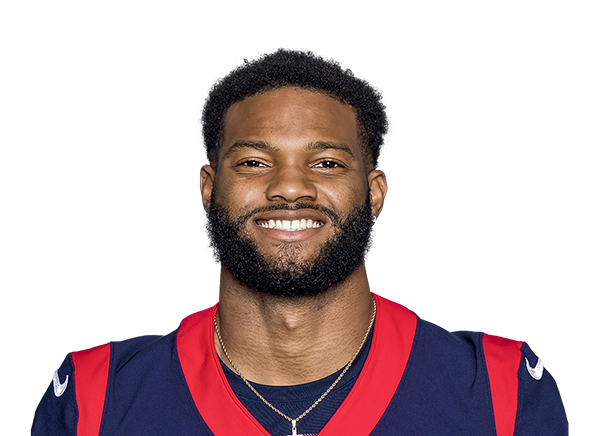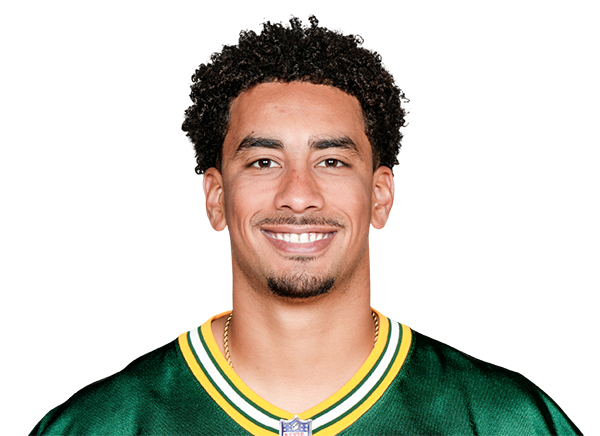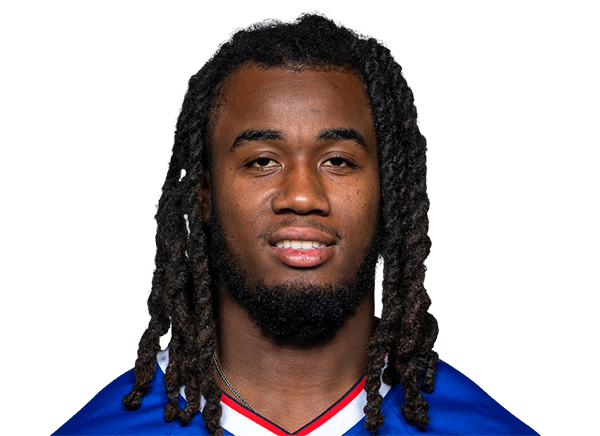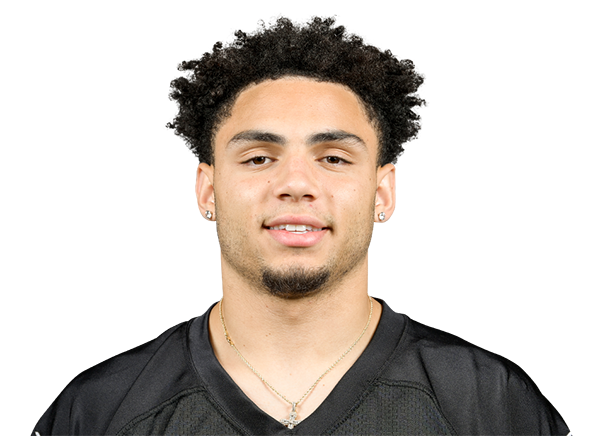A Superflex Life, Volume VI: Superflex Flywheel
Believe me, I get the impulse. The startup draft ends and everyone is drooling over their collections of workhorse running backs or young stud wide receivers. But you took the extreme path, you employed the QB-Xtreme (QBX) strategy “because some Superflex Dude told [you] to,” and now you’re jealous of the lineups these teams will unleash in week one. You want to start trading away your quarterbacks NOW, and cash in on that whole Superflex Theorem business (if you’re lost, check out Volumes IV and V on the QBX strategy and the Superflex Theorem, respectively).
READ: Volume I: Why Superflex? | Volume II: Mythbusters | Volume III: Tao of Superflex | Volume IV: QBX | Volume V: The Superflex Theorem
This is the last obstacle in the QBX journey though, and it is definitely the hardest. But be patient; good things come to those who wait. No, that’s ketchup. Whatever, it still applies.
Realistically, there is no reason for them to trade for a QB right after the draft. If they wanted a QB, they would have drafted one. And they don’t know that they need a QB… yet.
Quarterbacks don’t really hit their max values until the season starts, and here’s why: first, all of these QBs are healthy and undefeated. Every QB is on pace for a career year. But once the season starts, some of them will get injured, some will lose offensive linemen or pass-catching weapons, some will get muted by bad play-calling, and one or two of them might just suck.
Some superflexer somewhere in Superflex City went into 2019 with a loaded group of RBs, a loaded group of WRs, but Cam Newton and Marcus Mariota at QB. They lost Newton to injury and started to sweat. Then they lost Mariota to the Titans’ bench and came to a crossroads: trade for QBs, or firesale this beautiful work-of-art roster? That desperation is where you made your profit via the Superflex Theorem.
Here’s the dirty little secret though: they shouldn’t have gone into panic mode when Mariota was benched. They should have gone into panic mode right after their first pick in the startup, when they selected an RB with a one or two-year shelf life, over a roster stabilizing QB. And they should have panicked the entire way through the startup as they put together a sub-optimal dynasty superflex roster. Mariota was the effect, not the cause.
The optimal roster construction won’t end up in this situation; it is always an easy trade or waiver acquisition away from getting right back on track. The four fantasy positions work together to keep each of the other positions moving forward without slowing down. When the roster is built around RB power but doesn’t have QBs to support them, an injury or two at RB – the position with the highest risk of injury, by the way – will seize the engine and bring the entire machine to a halt.
A flywheel stores and distributes kinetic energy. They provide continuous power output in systems where the energy source is not continuous. Just think about the engine in your car; if you took off at full speed every time you applied pressure to the gas pedal, and then came to a complete stop the second you took your foot off of the gas pedal, we would all be walking around with broken necks from the whiplash, and it would take hours to travel across the city, ten feet at a time. The flywheel stores the energy, and continues to apply it to the driveshaft, even after you take your foot off of the gas, so that the wheels continue to spin and you continue to move forward at a regulated speed. It holds the energy until you need it, and then distributes it where it is needed.
So let’s put the flywheel on our dynasty engine. We don’t want to lose energy and momentum to the inertia of one component. Build the roster into the flywheel during the startup, so the machine will keep moving forward as it distributes its power to whichever position needs a boost. Here’s how:
Quarterbacks
Wouldn’t it be the ultimate plot twist if I said: “go Zero-QB?” After writing five detailed articles on the power and importance of quarterbacks, I completely change direction at the last second and contend that the optimal roster build doesn’t include an emphasis on QBs?
I won’t do that to you, because this entire series of articles really is meant to illustrate all of the reasons that QBs are the centerpiece of this flywheel. Scarcity, value, short- and long-term production… it’s all there for QBs. So anything other than QBX is sub-optimal.
We spent this entire series discussing the reasons to take QB seriously, and to take advantage of their trade value. But I barely mentioned in passing (pun not intended) that the QBX strategy is beneficial even if you don’t trade them away.
In 2019, the top five defenses against fantasy QBs allowed an average of 12.3 PPG to QBs. The bottom five defenses against fantasy QBs allowed 21.1 PPG to the position. So getting a QB in a great matchup yielded an extra 9 PPG on average than rubber-stamping a QB into your lineup, even in a bad matchup. Guess what you can do if you have five QBs instead of just two?
The whole philosophy behind the late-round QB strategy in single QB leagues is the notion that a QB on waivers will be in a better matchup than a stud, and score similarly if not better than said stud QB. We can’t “stream” QBs the same way in superflex as in single QB because starting QBs aren’t available on waivers. But what we can do is stream within our roster.
The ability to play matchups at QB and adding nine extra points by avoiding a bad matchup and capitalizing on a good matchup is like adding another starter to your lineup and starting 11 players against your opponent’s 10. If you do that at both QB and superflex, you can add up to 18 points (two starters) to your lineup… and that’s just an average. In reality, getting two QBs with capped upside for the week out of your lineup, and replacing them with two QBs with high floors and monster upside could yield well over 20 points in a given week, and upwards of 40 extra points. Suddenly, your RBs don’t have to do anything because the two QBs in primo matchups more than cover for them.
All of the other reasons to draft five or more QBs have already been covered in “A Superflex Life,” so I’ll spare you the redundancy. But the QBs fit into this flywheel, evenly distributed roster, for all of those reasons. Five feels excessive, but rostering five QBs allows them to distribute their power throughout your lineup and overall roster, rather than making another position pick up the slack for them.
Wide Receivers
On the spectrum of stability, wide receivers fall neatly in between QBs and RBs. They break out in year two or three, peak in year three or four, and sustain their productivity for three to four more years, on average. They don’t wear down from overuse, and they don’t even get replaced by a superior player. While an RB can be replaced by a younger/faster/fresher/cheaper RB, a WR will still be on the field running routes, even if his team drafts a better player in the first round of the draft. He may not see as many targets, but he’s still on the field and available for targets.
Because the window for a WR is open longer than RBs and similar to QBs, the WRs and QBs are a little codependent in terms of carrying their own weight. A rookie QB won’t produce in year one, so a WR in his seventh year (or later) is wasted on a dynasty roster that is starting the rookie QB. By the time the QB hits his stride, the WR will be on the downslope of his career. And it works both ways; a rookie WR doesn’t belong in a featured role on a dynasty roster with an aging veteran QB. By the time the WR peaks in year four, the QB will long since have been benched, if not retired.
As long as the career arcs of our QBs and WRs match up, our flywheel is still running at maximum efficiency. A fourth-year WR and a third-year QB will likely be viable starters together for the duration of the WR’s career. In the startup, choose a WR whose shelf life aligns with that of your primary QB.
Once you have the young WRs filling all starting WR spots (we aren’t worried about flex spots in this case, just the starting WR spots), the position is mostly complete. Since WRs are less likely to be injured than RBs, and they won’t be replaced on the field, we can lock in those starting WRs for the rest of their career expectancy, minus bye weeks and the occasional injury. Add in a backup to each starting WR, and one or two rookie WR lotto tickets, and this depth chart is set.
You heard me right. If your lineup calls for two starting WRs, we want no more than four startable WRs and another one or two developmental WRs. That’s it. Anything more is a waste of roster space, and the WRs in the flywheel begin to pull energy from the RBs.
People love to load up on WR depth “because of their long-term stability,” but when will you ever start that eighth WR? Even in the event that you suffer so many injuries and bye weeks that you need an eighth WR, one of your taxi squad rookies can be promoted to fill in for the week, or you can find a one week rental on waivers.
The two starters are locked in, the two backups will start during bye weeks, and the two lotto tickets will challenge for a starting job if they break out, making the older veterans expendable in trades. Any other WRs who have little or no path to starting for you should be passed over in the startup, traded away to clear space, or dropped outright. The flywheel needs the space for RBs.
Running Backs
I’ve been speaking very matter-of-factly about these dynasty assets, so if you’ll indulge me, I’d like to do a little editorializing:
I hate running backs in dynasty.
They break out in year one or two, or not at all, which is nice. You get to find out fast what you have. They hit their peak in year two or three, which is great because we don’t have to wait very long for them. And their peak production is only slightly greater than their breakout production, which is great because as soon as you draft a rookie RB, you get to find out what kind of producer he is going to be for you.
But here’s the problem: they break out in year one, peak in year two, and drop off in year three or four. There is no long-term stability. They get benched for poor performance, they split work with other RBs who are more fresh and spry, or better at pass protection or catching the ball out of the backfield. They get hurt, because their job description is to touch the ball 350 times in a season, 348 of which end in a violent collision. And even if they manage to stay healthy and keep their job for four years, they get to the end of their rookie contract, and rostering them is no longer financially viable for an NFL team that could just as easily draft a new rookie RB and get roughly the same production at a quarter of the cost.
And to make matters worse, RBs know that they aren’t financially solvent beyond the end of their rookie contracts, so they hold out for a contract extension with more money. While they boycott their team in this attempt at socially-accepted extortion, their backup fills in without missing a beat, so the starter has to rush back to prove his worth and gets injured because he wasn’t in “game shape.”
It’s all incredibly annoying.
With RBs coming and going all within a two-to-four year window, there is constant turnover at the position. Every off-season, several starting RBs are demoted within the dynasty hierarchy, and replaced by a new crop. And to top it all off, they get hurt and/or benched in-season so that we are constantly looking for a replacement.
Throughout the season, the RB position comes in waves. The season begins with all healthy starters, taking on a workhorse – or even a bellcow – role. But they get hurt, or they get benched, and by mid-season, their backups are carrying the load both for their NFL team and for our fantasy teams. Then, with the fantasy playoffs hanging in the balance, the backup gets hurt or otherwise replaced by someone you never even heard of, or forgot was still in the league.
Now, we know how powerful a good RB can be. It doesn’t matter if he was the week one starter or not, once he has the starting job he has the ability to give us 20+ fantasy points in a given week. That is the RB contribution to the flywheel. But our flywheel has to compromise with the RB position and keep our roster fully stocked with RBs in order to get that immense fantasy scoring.
We can’t get enough RBs. Even if the guy is buried on his team’s preseason depth chart, he’s probably going to be startable for you at some point in the season. Even if you have never heard of the RB, you’re going to learn all about him when he becomes fantasy relevant in the fantasy playoffs. We do still want the top tier RBs as well, because in the worst-case scenario they represent the first wave of RBs, and they help us win early in the season. Now and then, one of them will even stay healthy and productive for most/all of the fantasy season.
But we can’t predict which ones will get hurt and which ones will stay healthy. All we can do is prepare for the revolving door in-season, by filling our roster with RB depth. Five QBs and six WRs generally leaves room for ten or more RBs, and even that isn’t a comfortable number. Ideally we can stash rookie QBs and WRs on a taxi squad to make even more room for RBs. And we will use them all.
Then, mercifully, the season will end and several RBs will be replaced on their NFL rosters, leaving you with a need to restock the position. This is why we stabilize the QB position and give ourselves trade ammo, and this is why we go young and lean at WR so they don’t get in the way of the RB herd. We have roster space for more RBs, we have currency to spend on them, and we have a nice wide window with our longer-term assets so an RB can stop by for a year or two, then leave again with only a footprint as a reminder of his time in our lives… all without throwing our flywheel out of synch.
Flywheel Breakdown*
*Assuming full PPR superflex, a 24-man roster with four taxi squad spots, ten starters with two each at WR and RB, here is the makeup of a flywheel roster:
QBs – Five established starters on active roster, one rookie on taxi.
WRs – Four established vets on active roster, two rookies on taxi.
TEs – One starter and one high upside backup on active roster, one rookie on taxi.
RBs – the remaining 13 spots are filled with RBs, ideally with at least one high-end starter and two to four pass-catching specialists.
With this roster construction, each position sustains itself and complements the others. It leaves us with significant trade value when we need it, and a high production floor in the meantime. We even get a high production ceiling from this roster, as we platoon starters at both QB and RB to exploit favorable matchups and extract production from the two highest-scoring positions. We have a little bit of room to play matchups at WR and TE as well, but the difference between a good matchup and a bad matchup ends up being negligible, and we can make up for a down game from a WR with a big game from any QB or RB.
And that’s what the flywheel is all about; the even distribution of both value and production throughout the lineup and roster. A WR has a down game, and an RB makes up for it with a great game. An RB loses trade value and a QB supplements him in a trade. This roster works in perfect harmony, from setting a lineup to retooling the collection of players in the offseason. In every phase of the dynasty calendar, the flywheel takes the energy from its source and moves it to the part of the machine that is beginning to fall behind the rest.
When it comes to a fully-functioning flywheel, we know that QBs are the straw that stirs the drink. The QBX strategy is the catalyst to this long-term roster build that keeps the engine running, and keeps us not only on the road, but moving forward at top speed.
The Superflex Life
We spent the first five chapters of this Superflex Life talking about the QBs and how powerful they are, only to come to the conclusion that your startup roster needs 13(!!!) RBs. Suddenly, #QBX doesn’t seem quite so extreme!
That’s the thing about superflex; it isn’t just a QB game. People will say to me “hey, you’re that superflex guy… which QB should I try to buy low?” First of all, it’s Superflex DUDE. Or Duder, or el Duderino (if you’re not into the brevity thing). And I can tell you which QBs are great buy-lows, but not because my focus is heavily on superflex. It’s the exact same QBs who are buy-low candidates in a 1QB league. Nothing changes for the QBs themselves; it’s their relationship to the rest of the player pool.
Superflex is like that high-powered mirror that zooms in until you can see straight into your nose through your cavernous pores, and laugh hysterically until your wife needs the mirror back so she can carefully apply her makeup. It’s not nearly as funny, but it gives you a close up look at the blemishes of the other positions. In 1QB, there’s no considering the longevity of RBs; there’s only “I drafted eight WRs and don’t have room for anything other than RBs.” There is no worrying about the low per game scoring of the WR position; there’s only “well, I have to start three of them so I might as well grab a few.”
Those positions have big, bouncy “but’s” though, and 1QB is the Charlie Weis khakis while superflex is shrink-wrap grade spandex. The WRs last a long time… BUT they don’t score as much as QBs. Like, ever. Sometimes the RBs score as much (or more) than QBs… BUT they only produce to that degree for two or three years, and completely flame out within five years. Without the superflex position, we wouldn’t have the QB power to draw out the cold, harsh realities of the other positions, and we would blissfully go through our dynasty experience cycling through RBs and WRs without ever wondering if there is a better way… and without ever knowing that there is even a flaw.
Superflex has a tao, a natural order and a natural flow. It encompasses and embodies all fantasy positions. It gives us the opportunity to harness their power, and distribute them throughout our lineups and rosters, so that we keep moving forward, with effortless fluidity. The strategy itself feels “extreme,” but it is natural and synergetic. It doesn’t focus solely on the QBs, it simply allows the QBs to exert their energy, giving the flywheel its unrelenting forward motion.
As in the game on which this fantasy game is based, the QBs can’t win by themselves. But a QB performing at the highest level – capturing the imagination of a young football fan – propels his team forward, distributing the ball and positive energy along with it. Giving the team power. Giving the team value. Giving the team hope. Giving the team a chance. Giving the team life.
Real life. Fantasy life.
Superflex life.
- Superflex Dynasty Rankings Explained: John Hogue - January 17, 2025
- Superflex Dynasty Fantasy Football: Top Six 2024 NFL Draft Quarterbacks In Focus - April 21, 2024
- John Hogue: Dynasty Superflex Rookie Rankings Explained - August 8, 2023
























































